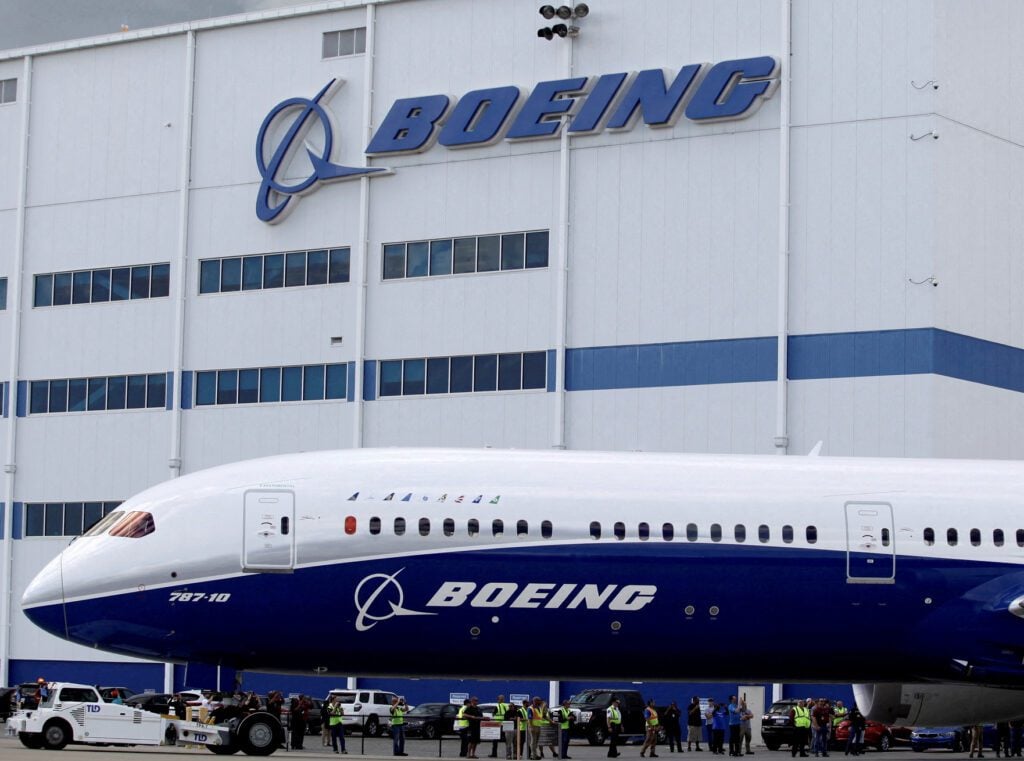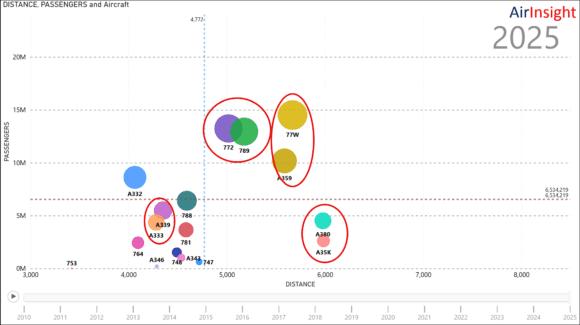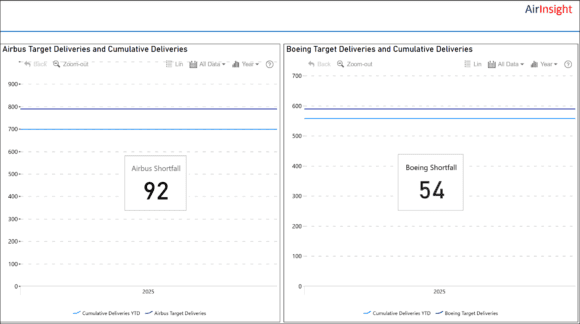
Boeing reported a second-quarter loss of ($1.24) per share, a loss of ($612 million), a significant improvement over last year’s second-quarter loss of ($1.1 billion). More importantly, the company generated a $227 million operating cash flow compared with ($3.9 billion) in the same quarter last year. Net cash flow remained negative. Boeing beat Wall Street expectations for earnings, but the market reacted negatively to news of further program delays.
The Ortberg Era
As we approach the end of Kelly Ortberg’s first year as CEO in early August, the company appears poised for continuing improvements. The Boeing 737 MAX is now producing at a rate of 38 per month, and Boeing is stabilizing production at that rate. Ortberg indicated in the conference call that the company is preparing to ask the FAA to authorize a rate increase to 42 per month during the second half of the year.
“Our fundamental changes to strengthen safety and quality are producing improved results as we stabilize our operations and deliver higher quality airplanes, products, and services to our customers,” said Boeing president and CEO Kelly Ortberg. “As we look to the second half of the year, we remain focused on restoring trust and making continued progress on our recovery while operating in a dynamic global environment.”
Delivery Performance and Delays
During the quarter, the company delivered 150 aircraft, including 104 737 MAX, 24 787, 9 767, and 13 777s. This compares to 92 in Q2 2024, a period marked by disaster for Boeing due to quality issues and a significant strike. The increase in deliveries buoyed revenues to 10.9 billion in the quarter, trimming the operating loss to ($557 million), down from ($715 million) last year.
The 737 MAX program is facing further delays due to engine de-icing issues, as Boeing is revisiting the design after a potential solution’s testing failed. As a result, the company does not expect certification of the MAX 7 or MAX 10 until 2026.
The good news is that Boeing is finally running at the maximum FAA-approved rate of 38 per month, with performance indicators in the green to enable the company to request an increase in rate to 42 per month. Once that happens, additional increments will be requested for five extra units per month, with at least six months between rate adjustments and strong quality performance per the company’s prior agreement with the FAA.
787 production has increased to 7 per month, and the company is currently expanding facilities in South Carolina to be able to raise that rate soon.
There has been a push to complete the 767F and 777F order books before a 2027 ICAO deadline concerning emission requirements that the existing engines cannot meet, meaning the aircraft can no longer be sold after that date. 777 production increased to 13 freighters during the quarter, while the passenger 777-X continues in certification testing with expected approval in early 2026.
Boeing’s defense unit is also amid a turnaround, earning a positive operating margin this year versus a loss last year. Boeing Services remains the highest margin segment, achieving double-digit margins. Unfortunately, the profitability from Boeing’s Services unit could not overcome the net losses in Commercial Airplanes and Defense.
The Outlook and Significant Risks
The outlook for Boeing is improving, but it remains fraught with geopolitical and execution risks. Recent trade deals negotiated by the Trump administration have often included Boeing aircraft deals, which can balance trade deficits, into the negotiation process. In addition, the just-announced deal with Europe exempts aircraft and components, providing Boeing full access to a historically significant market. However, until an agreement between the US and China is reached, long-term uncertainty over trade relationships persists, but the company remains optimistic. The remaining inventory of Chinese ordered aircraft built before 2023 has dropped to about 15 aircraft at the end of the quarter, with about half to be delivered later this year and half in 2026.
Certification Delays Hurt
Unfortunately, the company is falling further behind with its development programs, as evidenced by this quarter’s official announcement of certification delays for the MAX 7 and MAX 10, which poses a significant concern for customers. Every day until certification is achieved and deliveries can be made is costly to Boeing, which must compensate airlines for those delays. This should be the next key priority for Kelly Ortberg, as production quality is now improving, something that airline customers have verified during their earnings calls.
With a record backlog of nearly 6,000 airplanes on order and a strong market forecast to continue to grow, Boeing’s commercial aircraft unit simply needs to deliver, both on certification and quality production. It appears to be failing on the former but succeeding with the latter.
Currently, the company has excess inventories for the 737 MAX, and supply chain constraints should not impact production at current rates until at least two incremental increases in production rates are approved. Even then, the supply chain appears to be stabilizing well.
Obtaining certification for new aircraft is a more difficult problem, as the historic relationship of trust between the FAA and Boeing was broken during the ill-fated 737 MAX 8 certification, in which the company misled the FAA. Boeing and the entire industry will feel the impact of more stringent requirements for years to come, particularly due to the FAA’s “by the letter” requirements, which mandate accepting only facts and not assurances, and double-checking the significance of sub-systems like MCAS.
The pandemic’s impact exacerbated the issue of buyouts among more expensive engineers nearing retirement, while also leaving the company without a generation of problem-solvers skilled in certification processes and engineering requirements. Boeing is re-learning some lessons the hard way in the MAX 7 and MAX 10 certifications, now pushed back to 2026.
We still haven’t seen an FAA approval for Boeing’s latest exemption request for the Stall Management Yaw Damper system, which could push certification back another 18-24 months if not approved. That system was upgraded to a higher level A impact than level B, indicating more serious consequences in the event of a failure and the need to meet more stringent requirements. An exemption would “kick the can” down the road for a couple of years while final solutions are worked out.
The Bottom Line
The good news is that positive change is being achieved at Boeing. The bad news is that, just like a supertanker, you cannot stop and change directions quickly. The elements that Kelly Ortberg and the FAA have put into place have clear key performance indicators that will determine whether and when Boeing can increase production rates.
Boeing is doing better, but until it can get its new aircraft certified, it will remain at a disadvantage to Airbus concerning the breadth and depth of its product line. While the improvements we are seeing are positive, Boeing still has a long way to go to recapture the leadership role in the industry.
Views: 136




